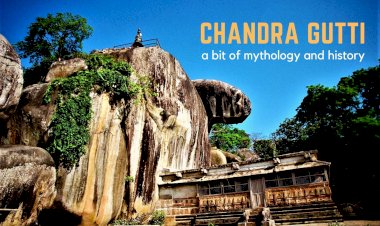Siju Cave - A Underground Adventure in Garo Hills
Meghalaya the land of ethereal beauty mesmerizes the visitor and challenges to the extreme.No wonder the rain, rivers, flora - fauna, dense forest, and innumerable waterfalls give a visualization of being the wettest place on earth. A cluster of Caves is no exemption spread across the hills. Siju cave is one such place in south Garo hills that has innumerable opportunities to explore the child in you. Awaiting your visit!
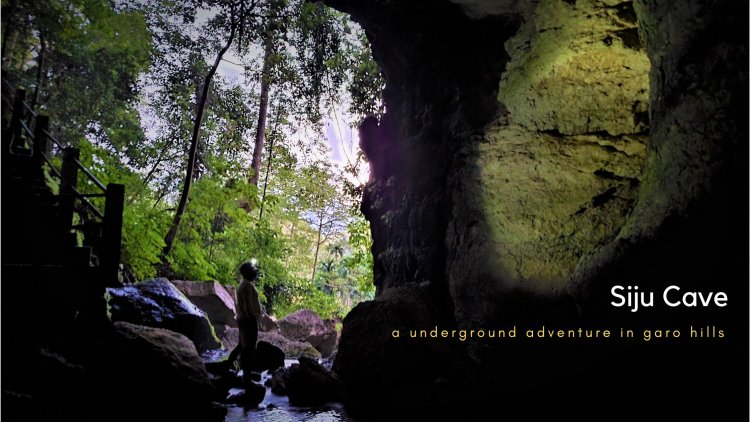
Have you heard of a land where rivers sing a song and leave a path where they flow incessantly? During their course, the natural rock formations form as swift flowing water melts the rocks, which is fascinating and nature's true work of art.?.
Do you agree with it?
The North Eastern state of Meghalaya has the utmost share and is known for its Natural Cave systems. Most of these caves in Meghalaya are carved out as water-met limestone and sandstone, forming some exquisite structures and some unique ecosystems. Few still Unknown and Unexplored. !
It is surprising to know that nature has bestowed the region with about 1580 caves, out of which 980 caves have been explored. As per the latest statistics.
While a few of the caves in Meghalaya are quite popular and get an array of visitors during the tourist season, there are many caves that are yet to be explored and to be identified. A Cave at Siju is one of the oldest caves in Meghalaya to be explored. Located in the Garo Hills of Meghalaya, Siju Cave is a best keep secret cave system and is also claimed to be one of the longest in India.
During our trip to the Garo Hills, we explored Siju Caves and the surroundings. Only a few passionate travelers visit the land of Garos, probably because not much is known about the remote area. We felt we were one the fortunate souls to get a glimpse of it and receive their hospitality!
It was on our way back after visiting the remote corners such as Balpakram and experiencing the Garo Festival we made a decision to visit Siju Cave.
Where is Siju Cave located?
Siju Cave is located at Siju in the South Garo Hills of Meghalaya. You can reach the place either from Shillong or Guwahati. Siju cave is accessible by the roads unlike Wari Chora, for which we had to go offroad and trek. Siju has located around 255 km from Shillong and 125 km from Tura, the headquarters of the Garo Hills.
Siju Cave
Siju Caves is unquestionably one of the must places to visit in Garo Hills. It is known as Siju Dobakhol - Dobakhol means cave in Garo parlance is also referred to as bat cave. It is located near the Napak Lake and Simsang River Game reserve. Like most of the caves in Meghalaya, Siju is also a limestone cave known for its stalactites and stalagmites formations with an awe-inspiring system of deep labyrinths with a perennial stream running right through it.
We were told by our guide that explorations have revealed the presence of almost 102 living species residing inside the cave system that also included a few species known for the first time, like a cave-dwelling shrimp and a snail species.

Later a team from the Zoological Survey of India from Patna conducted a detailed study on the bat fauna inside the cave, sometime around 2 decades back Out of 67 species of bats identified in the state of Meghalaya. They found that there are about nine bat species living inside the cave. Later on, many other studies and explorations are in process till now on the Siju cave. Siju cave happens to be one of the most researched and explored cave systems in India.
Exploring Siju Cave
As it was our last day in Garo hills, we woke up early and reached the banks of the Simsang River near Siju. As It was mid-November we can be blessed to taste the local oranges.
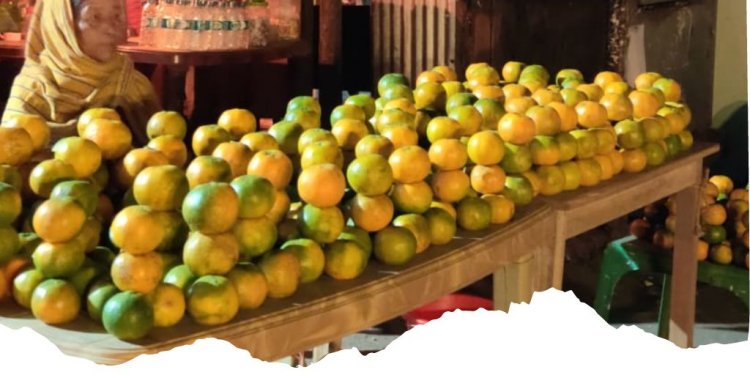
After a briefing, we climbed the stairs and headed toward the Siju Caves. There is an entry ticket to Siju Cave – INR 50 per head.
There is a newly built adventure park beside the Siju Caves. On the opposite side of the road, I could get a bird's view of the quiet flowing Simsang River, which looked crystal clear and scenic.
A flight of few steps led us to the orifice of the Siju Caves. The entrance of the cave looked inviting. We could see a few limestone formations and water was dripping down the entrance of the cave. We looked in only to see a narrow passage that ultimately led to pitch darkness. It seemed as if we were witnessing the wonders of mother earth.
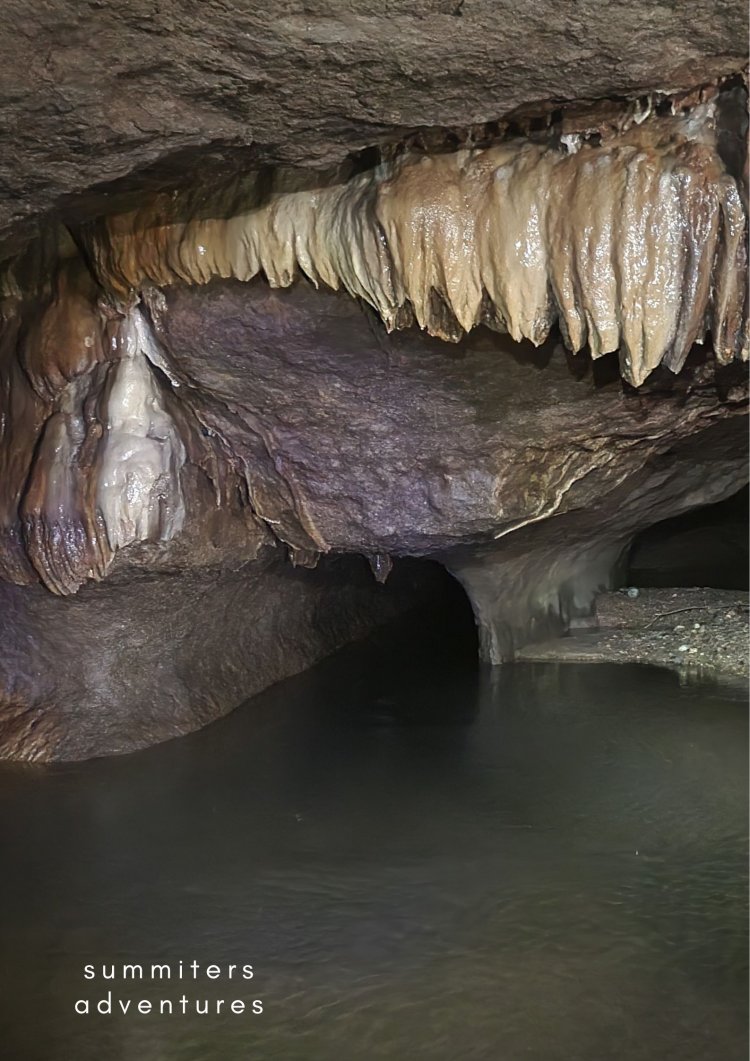
One of the formations looked like the udder of a cow Water was flowing on the floor of the cave and dripping. The perennial water flows gently from the river passages and is said to be the tributaries of the Simsang River.
An Adventure Underground
A sense of curiosity and trepidation enveloped us as we moved inside. The unique stalagmite formations and stalactite formations dangling from the ceiling mesmerized us. We could hear the sound of flowing water. The pretty patterns of nature engaged us in discussion with our guide to know the facts about the cave.
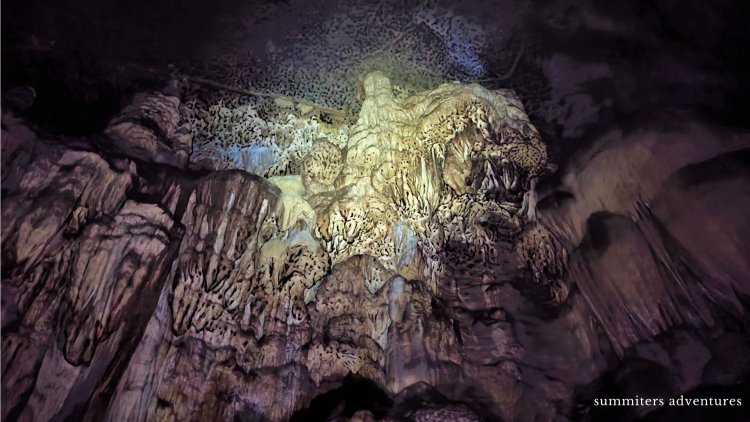
Each cave is unique, and few began to compare the En Nakama cave that we visited during our visit to Wari Chora.

The cave has many passages and labyrinths that can become very confusing. One can easily get lost inside the caves.
However, a few of the members, accompanied by a guide explored the interior of the cave. Our eyes also got adjusted to the pitch darkness. We had carried headlamps, but they were not quite sufficient to provide us proper light. We also had to mind our footsteps and keep an eye on the water beneath our feet. At places, the water was high enough to reach above our knees
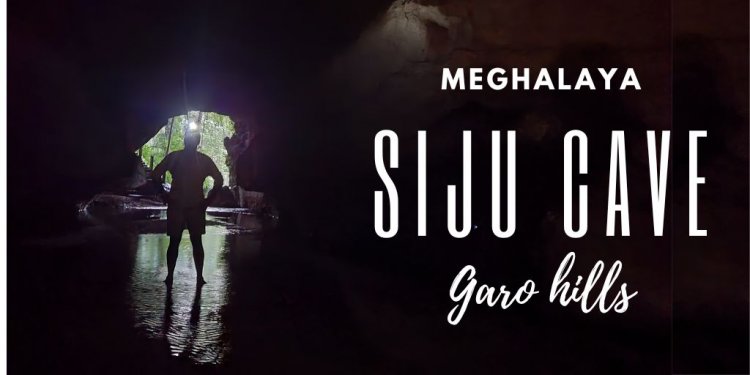
.Colony of Bats
At a certain point, our guide asked us to look for the bats dwelling in the cave.
We could see thousands of bats dangling from roofs, upside down high pitched squeaks while they fly was unusual in the dark environs. Our guide pointed the torch at the ceiling and told that Hipposideros larvatus, roosting inside Siju cave, a fairly common bat found in many caves of Meghalaya.
Soon, we heard a strange humming sound as well as smelled a strong odour.
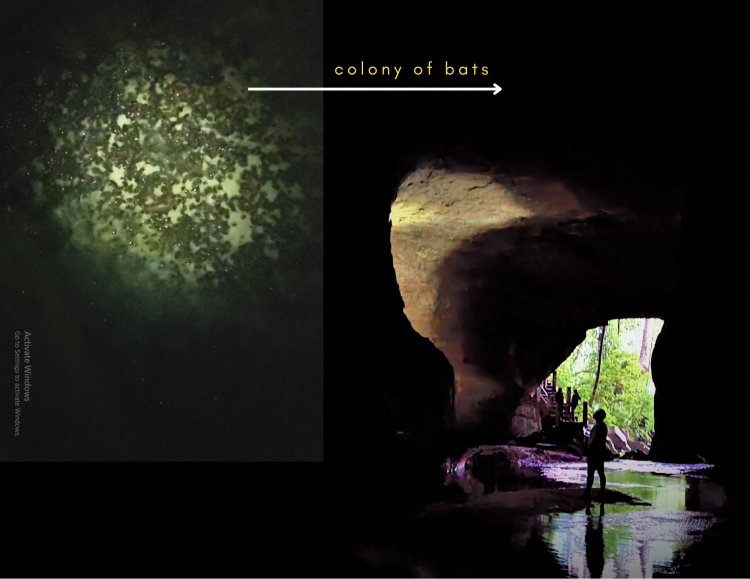
Many were simply flying around. I had never seen such a congregation ever!. With limited resources, we are able to capture average photographs. But the squeaky sound and the formations will surely be intact and memories to cherish forever!
Though we had the intention of exploring more, we together followed the guide and finally retraced our steps and came out of the Siju cave with a strange feeling. Though the cave is huge and has immense options. We only visited a small part of the cave.
The eyes began to adapt again and I was reminded of three great things...
“Only when we are brave enough to explore the darkness will we discover the infinite power of our light?”
Light is sacred; silence is to integrate with eternity!”
―
Siju Cave Travel Guide
How to Reach Siju Cave?
To reach Siju Cave, one needs to first reach either Guwahati or the Shillong capital of Meghalaya. Guwahati is about 200 km and Shillong is 250 km by road. Private vehicles can be hired to reach Siju. Don’t rely on shared vehicles
One can reach Tura, the largest town in Garo Hills, and then visit Siju.
Tura is about 125 km from here.
What is the best time to visit?
The best time to visit Siju Cave is during the winter and spring season. November to April is the best time. Don't ever think of visiting in the monsoons.
Where to stay at Siju?
A basic tourist lodge is the only option to stay at Siju. It has excellent views of the Simsang River.
Things to be aware of before visiting Siju Caves
1. If you want to explore the caves, be prepared to wade through knee-deep water
2. Carry powerful headlamps or torches if you want to explore inside the cave. The interior is pitch dark
3. Don't venture without a local guide. Follow his instructions. Due to water dripping, the rock formations will be slippery. The cave has many cracks, narrow passages, and labyrinths. It is easy to get lost inside.
· 4. Be in the group, don’t explore alone
5. If you are a bit claustrophobic, it is better to avoid entering the interiors of the cave.
6. Wear proper attire and gumboots
Few DONT'S during a visit to Cave
1. Don't shout inside the caves or play loud music. Enjoy the silence and the squeaking sound of bats
2. Dont leave trash in the Caves or pollute them
3. Dont write caricatures on the walls of the caves or deface their natural beauty
Hope you liked this blog on Siju Cave. If you found this useful, please share it with your dearest ones and friends who love adventure!
If you are keen on visiting the place, we will be happy to assist you and
plan a trip for you!











